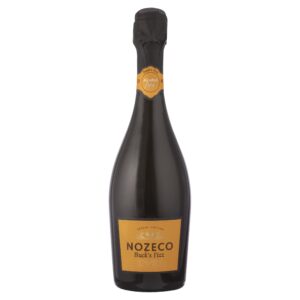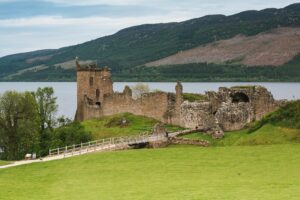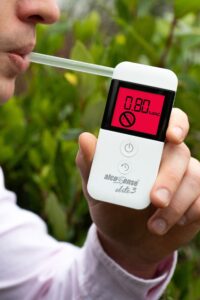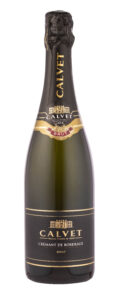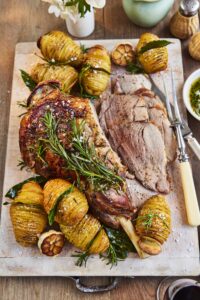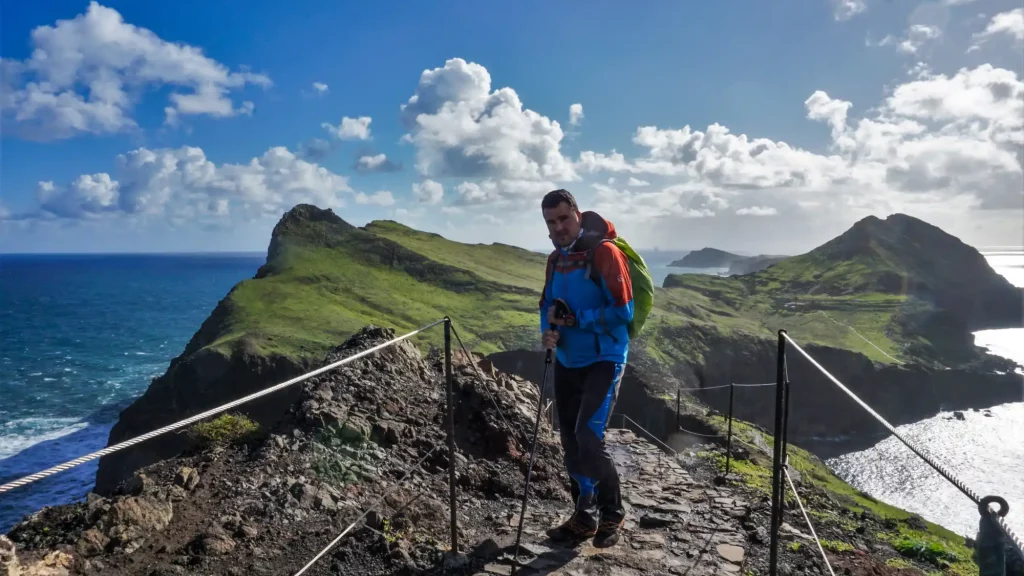

Having “done” the Botanical Gardens and visited Sir Winston Churchill’s old haunt of Camara de Lobos , my wife was unimpressed by the famous toboggan run at Monte.
Looking down at the tourists flying down the street with rugs over their knees on a settee with castors she announced , “I’m not coughing up twenty quid just to be pushed around by two men dressed up as supermarket butchers. Anyway , my degenerate cockyx wouldn’t be able to handle the cobbles.”
So we walked.
Monte is not the real Madeira. The mountains are. A keen-ish walker, my wife has always wanted to see Madeira. She had always wanted to walk the “levadas” , the man-made irrigation channels which criss-cross the Atlantic Ocean’s “Floating Garden ” and which afford some of its best views and most memorable scenery.
They were originally built in the seventeenth century to bring rain water down from the mountains to the sugar mills. As an early significant birthday present and to put me in credit for several anniversdaries to come, I organised a long weekend in Madeira as a surprise treat for “the old dear”. The surprise being that I would go too.
There are nearly 1200kms of walks on Madeira. Only 40 miles long by 15 mile wide , two thirds of the famous Portuguese offshore island is a natural park and legally-protected conservation area. Most of the “levadas” have footpaths or “trastes” running beside them.
One of the best levada walks happens to be the shortest. It takes about two hours. A little longer if you have to ask your mother for a piggyback. From Ribeiro Frio you walk gently down to Furado in the south-east corner of the island and then onto the Balcoes viewpoint where you can see Madeira’s sister island , Porto Santo, where Christopher Columbus lived after marrying the governor’s daughter. Along the Ponte de Sao Lourencio cliffpath you see Farol and the Ilhas Seivages or “wild islands”.
Santana and the Pico des Pedras is another good walking area with manageable gradients. The drive there is through larch , pine and eucalyptus forests , groves of custard apple , tipuana, begonias , bougainvillea , hibiscus and fennel, from which the capital , Funchal , got its name from its Portuguese discoverers in 1419
In between our half-day excursions up into the interior, we did “the sights”. Notably tea on the terrace at Reid’s.For many years “the Palace” was the only place for the haute monde to stay and be seen. Sir Winston Churchill went to paint and write his war memoirs there. Sir George Bernard Shaw learned to dance there. Gregory Peck stayed there while filming “Moby Dick”.

Opened in 1891 , the world’s most famous clifftop hotel perched on the Salto Cavalo promontory above the Atlantic , was the idea of a Scot. William Reid arrived in Madeira as a fourteen-year-old cabin boy with £5 to his name. The first guests arrived in style. They were carried up to the hotel by a bullock taxi or a hammock which , according to the hotel’s first advertising leaflet, “was most ably handled by two muscular and gentle bearers.”
They came to winter in Madeira and enjoy its temperate climate ; to take the waters, to take the lift to swim in the rock pool which until 1967 was the hotel’s only swimming pool ; to swan about in their magnificent suites and opulent rooms ; to stroll in the famous gardens ; to enjoy high tea on the terrace and “the absolute freedom from dust “. Above all , they came to the small Portuguese -owned island three hours from London to indulge in “the passive , unfatiguing exercise ” of doing as little as possible for as long as possible. The hotel now has a spa offering caviar treatments! But it still has a dance instructor for beginners.
“The islands of eternal spring’, where the temperature rarely drops below 19C , are on the same latitude as Morocco and 1,000km from the European mainland. The Laurissilva is a UNESCO Natural World Heritage Site and the Madeira Natural Park a protected area covering two-thirds of th island. Madeira Island’s territory
If Funchal’s CR7 Museum and seeing Madeira-born Cristian Ronaldo’ Golden Balls or Ballon D’Ors and five Golden boots I not your cuip of tea and , if poncha, isn’t either , you can always been obvious and taste the famous wines.
Madeira wine can be tasted in Sao Francisca Wine Lodge in Funchal. Lighter than port, its distinctive burnt taste came when wine shipped to the Far East was found to improve if left in the baking sun on an open deck. The wine is now warmed up to 40 degrees over three months. Four types are made – the dry “Sercial” , medium dry “Verdelho” and “Bual” as well as the honeyed “Malmsey”. They are excellent accompaniments to Madeiran dishes like “pargo” ( sea bream ) “talbados” (prickly pears) “espedata” (meat on spit) and “babata doce” (sweet baby pots ).
The best rainwater in the world is found in the Atlantic, four hundred miles off the west coast of Africa.
Rainwater Medium Dry Madeira may be considered excellent entry-level Madeiran wine but it is an excellent fortified wine in its own right. “Nobody really knows why Rainwater came about. One theory is that a gentleman in Savannah, Georgia tasted some and claimed “This is as fine as rainwater”. Pre-industrial acid rain, of course.
The second theory is that some barrels sent to the US for the merchant William Neyle Habersham, was left on the dockside, also in Savannah. They got left outside and got diluted by a tropical storm.Today, Rainwater is still a lighter style of Madeira. By law it must be light in colour too. The wine is usually bottled at around 3 years of age some producers, like Justino’s, who have bottled 10 year old Rainwaters. They are made mostly from Negra Mole grapes but could also have Triumfo or Complexa.
Apparently, George Washington drank a pint a day. The Constitution and Declaration of Independence were officially toasted with Madeira. It was even America’s first tax loophole when the King of England declared that all goods being shipped to America had to be taxed but forgot to include Madeira. Being part of Portugal, Madeira was the first country to recognize the independence of America. It was the biggest-selling wine in America until Prohibition.
Rainwater Madeira wine is aged in “estufas” rooms. Madeira’s secret is that a small amount of distilled alcohol made from cane sugar is added to stabilize the wine.

Traditionally there were four primary high acid grapes from which Madeiras were made. In progressive order of sweetness, from very dry to sweet, those were Sercial (from the north), Verdelho, Bual( found mainly in the south) and early harvested Malvasia (also known as “Malmsey” and also grown in the south).
May sees the annual Flower Festival, June the island’s Atlantic Festival, Asgust and September the wine lounge in Funchal’s Praca do Povo while m October sees the Nature Festival. But , it won’t be the wine , the birds, the lack of beaches . the frangipani, dragon trees, birds of paradise, camellias and jacaranda I will always remember and thank Madeira for. It will be walking the cliffs of Ponta da Sao Lourenco and up into the highlands of “The Pearl of the Atlantic”.
To Pico Ruivo. There I experienced true peace.
And contentment.
It is very difficult for a wife to nag her husband when she is suffering from acute oxygen deficiency.

